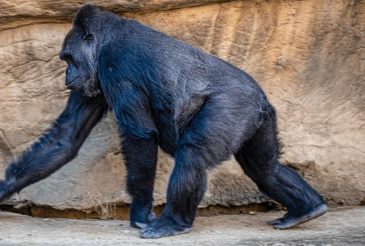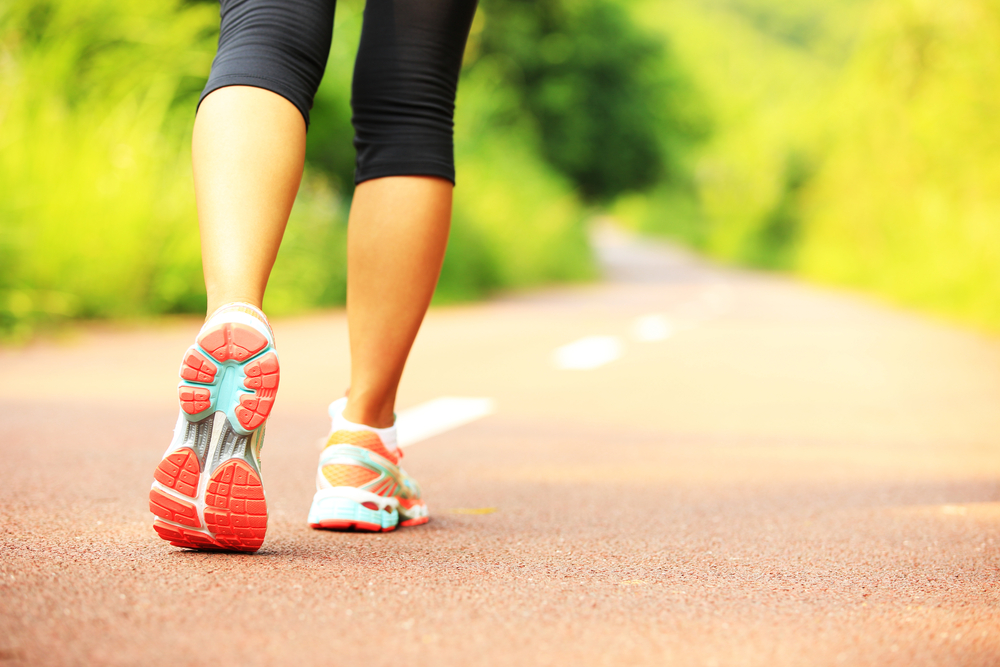The Gorilla Walk exercise tests strength, balance, and coordination, but it is not suitable for people with ankle, knee, or hip injuries.
Others are reading now
In the early 2000s, Melody’s “The Gorilla Dance” landed and began to play on every dance floor and studio worldwide. About 20 years later, the choreography of the song doesn’t seem so crazy since more and more people are imitating the movements of primates by doing the “Gorilla Walk,” a type of exercise involving the body’s major muscle groups.
It has become popular in gymnastics, calisthenics, and animal flow classes as part of the initial warm-up. For its practitioners, moving like a gorilla using all the muscle chains is fun and beneficial as it works parts of the body that are not tested daily.
“I could feel how stiff my muscles were when I got into the squat starting position, and I’m glad I spent nine minutes a day trying the Gorilla Walk,” details in an opinion column the North American fitness influencer, Sam Hope. According to her, the movements that primates make are excellent for developing mobility in the hips, shoulders, and wrists in addition to working the body’s major muscle groups, including the core.
“At the end of the week, I noticed a difference in my hips and hamstrings,” she emphasizes.
Also read
Gorilla Walk: An Exercise That Goes Back to the Origins of Humanity
For millions of years, as humans have been bipeds, the ability to walk upright has not only resulted in the movement that is most performed today to move from one place to another and to add minutes of physical activity but also helped the human species to travel great distances, settle in new places, and survive in dangerous climates and environments.
Although people have long been accustomed to walking this way, much earlier, humans moved on all fours like monkeys or gorillas. And according to research, making this movement – even for just a few minutes – could be just what people need to develop more strength and better mobility without the help of external elements like weights or gym machines.

As these movements are now unknown and seldom performed by humans, this type of walk tests factors such as strength and coordination since it involves moving in a different way and at the same time with all four limbs.
“Like other physical exercises, this walk has its advantages. The movements of the gorillas highlight the ability to maintain balance and work on coordination and mobility, which ultimately end up being undeniable benefits for the well-being of the organism,” highlights sports medicine doctor and director of the Diploma in Pediatric Sports Medicine at the Favaloro University, Santiago Kweitel (M.N. 93789).
Among its benefits, those who practice this type of walk daily highlight:
-
Improved balance and coordination. Using limbs that are not accustomed to being used for movement requires great coordination to synchronize legs and arms. Similarly, apes exhibit an ability to balance weight between arms and legs during their displacement, thus contributing to their stability and balance.
-
Works hip mobility. In an era where it is customary to spend most of the day sitting, hip movement is null, thereby weakening it. The Gorilla Walk starts the flexors and extensors by involving forward, backward, side-to-side, and rotational movements.
-
Strengthens shoulders and wrists. It is no coincidence that gorillas have large arms and appear muscular. This happens as a result of walking and balancing their body weight with their arms. In addition, the exercise involves unusual movements with the wrists and knuckles, improving mobility and moving these parts in different planes of movement.
Given its popularity, Dr. Kweitel informs that the ideal with this walk/series of movements is that they are employed as a tool that helps in physical preparation and not as a systematic training. “If used as a warm-up or muscle activation, it is suggested to follow up with more complex training,” he adds.
How to Do It?
Begin in a low squat position with both heels planted slightly wider than shoulder-width and knees in the same direction as the big toes. The spine must remain neutral without slouching to activate the core.
Once done, start to gently sway the body from one side to the other allowing the arms to become heavy but keeping the shoulders back. Hands are positioned in front of oneself, and the major force to perform the movement is made with the core.
Legs must follow the movement of the torso and arms, and it is suggested to perform the exercise in one direction and then return in the reverse manner.
Finally, it’s important to note that despite its advantages, this exercise is not suitable for everyone, especially those with injuries in parts of the body such as ankles, knees, or hips. In any case, Kweitel recommends having a prior consultation with a doctor who evaluates personal conditions and gives the go-ahead for the exercise.


